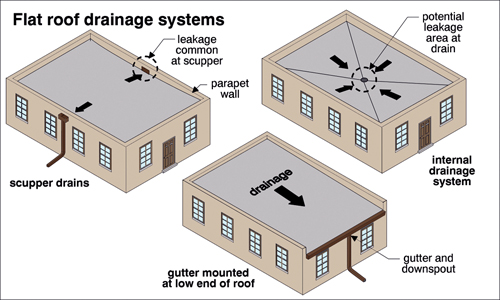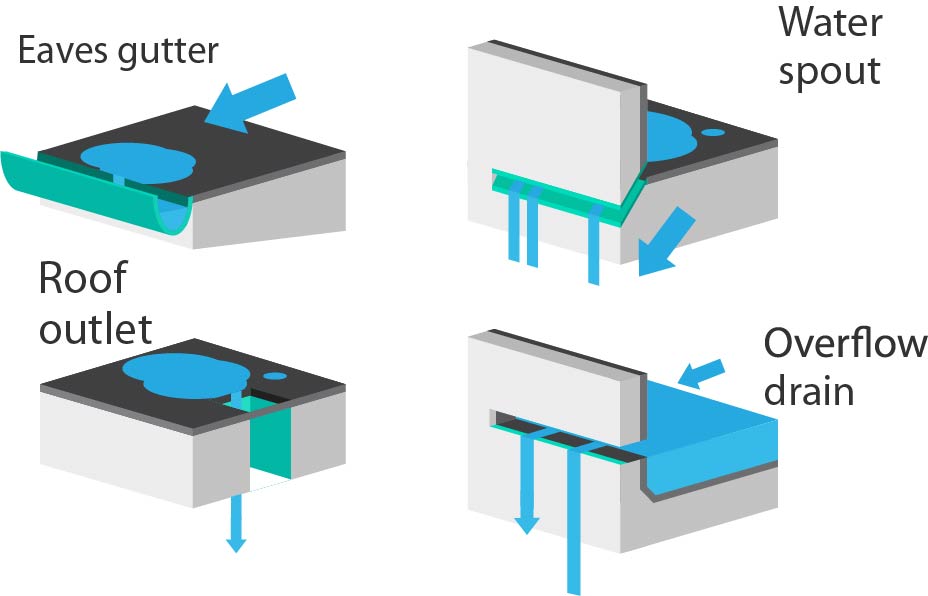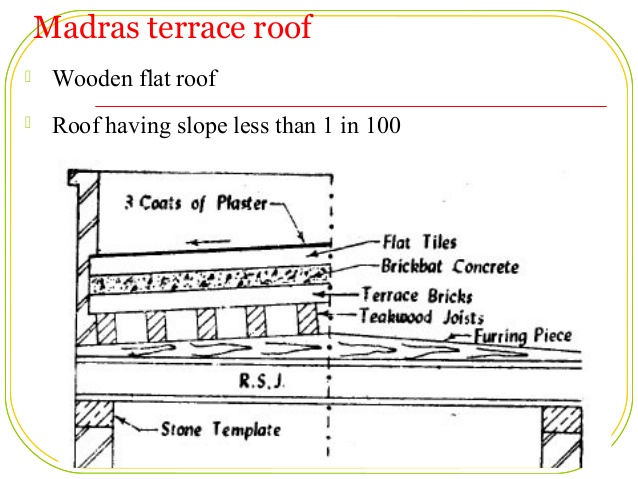A roof which is approximately flat is called as a flat roof. Flat roofs aren’t actually flat but must slope to drain water. Usually, a flat roof is built with a slight slope to provide some drainage. Normally a slope of ¼ inch per foot is used. Commercial buildings generally have flat roofs.
Flat roofs are an ancient form mostly used in arid climates and allow the roof space to be used as a living space or a living roof. The flat roof is commonly constructed in reinforced concrete, flat stone supported on rolled steel joists (R.S.J), bricks, tiled, etc.
Types of Flat Roof Coverings
Flat roofs can be made of a number of materials of which lead is the longest lasting. Other metals can be used and you will often find asphalt or bitumen coverings.
- Asphalt
- Ethylene propylene diene monomer rubber (EPDM)
- Turbo Seal
- Modified bitumen
- Chlorosulfonated Polyethylene (CSPE)
- Cold applied liquid membranes
- PVC membrane roofing
- Flexible Thermo Polyolefin
- Coal-tar pitch built up roof
- GRP roof – fiberglass
- Metal flat roofing
- Thermoplastic Polyolefin single-ply roofing.
Flat Roof Advantages
- The roof can be used as terrace for playing or for sleeping or for other domestic purposes.
- Flat roof construction and maintenance is very simple.
- It provides the better architectural appearance to the building
- It is easier to make the flat roof fire resistant.
- It possesses good insulating properties.
- It avoids the need of a false ceiling
- The construction work of upper floor can be readily taken up in case of flat roof, whereas in case of pitched roof, the entire roof has to be dismantled before the construction.
- Pitched roof need much more area of roofing material than flat roof.
Disadvantages of Flat Roofs
- A flat roof cannot be used for long spans without using columns and beams.
- In the areas of heavy rainfall, the flat roofs are not suitable.
- Initial cost is more.
- Due to greater variations in the temperature, sometimes cracks develop on the surface of the roof, which is difficult to repair
- The speed of construction is slower than that of a pitched roof.
- If the proper slope is not provided on the roof to drain off the rain water, pockets of water are formed on the surface of the roof which leads to the leakage of the roof.
})(jQuery);



